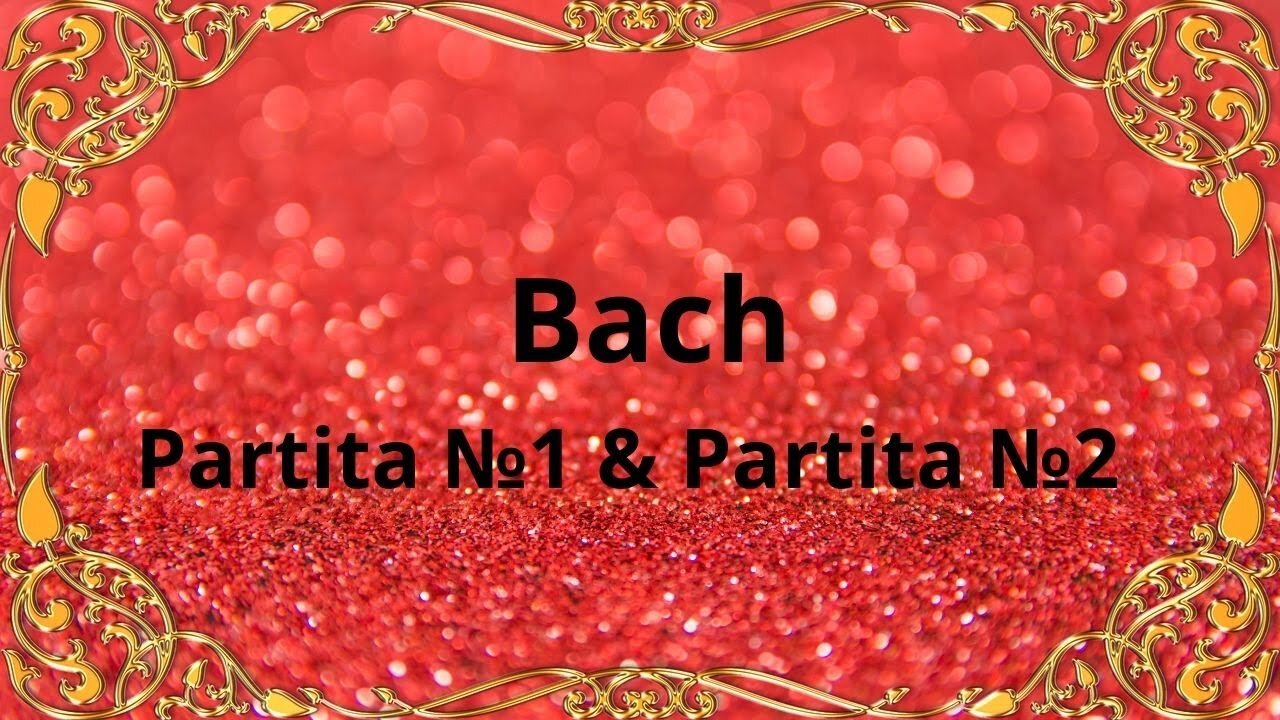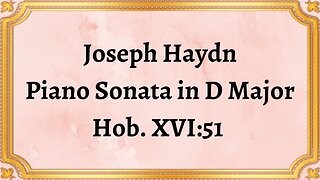Premium Only Content

BACH Partita №1 In B flat Major BWV 825 & Partita №2 In C Minor BWV 826
Johann Sebastian Bach, a towering figure of the Baroque period, composed a remarkable set of keyboard works known as the Partitas. Among these, Partita No. 1 in B-flat Major BWV 825 and Partita No. 2 in C Minor BWV 826 stand out as shining examples of Bach's genius.
Bach composed the Partitas in the early 18th century, during his tenure as Kapellmeister in Cöthen. These keyboard suites were created to showcase the virtuosity and expressiveness of the harpsichord or clavichord. Partita No. 1 and Partita No. 2 were published in 1726 as part of Bach's "Clavier-Übung," a collection of keyboard works. These Partitas demonstrate Bach's mastery of various dance forms popular during the Baroque era.
Both Partita No. 1 and Partita No. 2 consist of a series of dance movements, each with its own distinctive character. The Partita No. 1 comprises seven movements, including a Praeludium, Allemande, Corrente, Sarabande, Menuets, and a Gigue. Partita No. 2 consists of eight movements, including an Sinfonia, Allemande, Courante, Sarabande, Rondeaux, Capriccio, and a Gigue. These dance forms showcase Bach's versatility in composing various rhythmic patterns and tempos.
Bach's Partitas demand technical dexterity and interpretive skill from the performer. They encompass intricate fingerwork, ornamentation, and contrapuntal textures, which highlight Bach's exceptional command of composition. Beyond their technicality, the Partitas also exhibit emotional depth and expressiveness. Bach skillfully conveys a range of moods, from joyful exuberance to melancholic introspection, through subtle changes in dynamics, phrasing, and harmonic progression.
Bach's genius is evident in the seamless integration and overarching unity of the Partitas. Each movement serves as a part of a cohesive whole, with recurring motifs and thematic connections that bind the entire work together. This meticulous attention to structure and design allows the listener to experience the Partitas as a complete musical journey, showcasing Bach's mastery of musical architecture.
Bach's Partitas have left an indelible impact on the world of classical music. They have become a cornerstone of keyboard repertoire, frequently performed and studied by pianists and harpsichordists worldwide. The technical challenges presented by the Partitas continue to inspire and push performers to new heights of virtuosity. Furthermore, their profound musicality and emotional depth make them beloved by listeners and serve as a testament to Bach's timeless genius.
Johann Sebastian Bach's Partita No. 1 in B-flat Major BWV 825 and Partita No. 2 in C Minor BWV 826 are shining examples of his musical brilliance. These keyboard suites exhibit Bach's mastery of dance forms, intricate compositional techniques, and expressive depth. Their enduring popularity and profound impact on the classical music landscape attest to their timeless beauty and Bach's unparalleled genius.
Partita №1 In B flat Major BWV 825
I-Praeludium 00:00
II-Allemande 02:04
III-Corrente 05:29
IV-Sarabande 08:22
V-Menuets I & II 16:32
VI-Giga 19:19
Partita №2 In C Minor BWV 826
2.1 21:47
2.2 26:09
2.3 28:07
2.5 30:13
2.6 31:38
#classical_music #Bach #Partita
-
 6:07
6:07
Classical music_Music Inspiration
24 days agoJoseph Haydn Piano Sonata in D Major, Hob. XVI:51
721 -
 LIVE
LIVE
Fairy Mysterious Adventures
4 hours agoStardew with the Rumble crew #16
1,242 watching -
 1:28:42
1:28:42
Kim Iversen
9 hours agoThe War on Terror Was a Scam? Is Osama Bin Laden Really Dead? SEAL Who Killed Him Breaks It Down.
44.2K96 -
 1:09:44
1:09:44
Slightly Offensive
6 hours ago $7.18 earnedALMOST SERIOUS: How Mass Legal Immigration DESTROYED Australia | Guest: Maria Zeee
49.4K13 -
 2:38:38
2:38:38
TimcastIRL
6 hours agoTrump Orders DOJ To FIRE EVERY Biden Attorney, Calls For CLEAN HOUSE w/Siaka Massaquoi | Timcast IRL
120K70 -
 1:29:31
1:29:31
Glenn Greenwald
9 hours agoGermany's Repressive Speech Crackdown Intensifies; U.S. & Russia Meet in Saudi Arabia and Open Cooperation; Plus: An Amazing Hate Crime in Florida is Buried | SYSTEM UPDATE #408
89.2K55 -

DLDAfterDark
3 hours ago $1.06 earnedDLD Live! What's Your Typical EDC/Civilian Load Out? Guns & Ammo & EDC?
13.9K1 -
 1:30:48
1:30:48
Redacted News
10 hours agoBREAKING! TRUMP AND PUTIN NEARING PEACE BUT EUROPEAN WARMONGERS TRYING TO STOP IT | REDACTED
178K249 -
 52:40
52:40
Candace Show Podcast
10 hours agoSaturday Night Lively: What Were They Thinking? | Candace Ep 148
151K151 -
 DVR
DVR
Man in America
5 hours agoDocumentary: The Money Masters 'How International Bankers Gained Control of America'
40.2K8